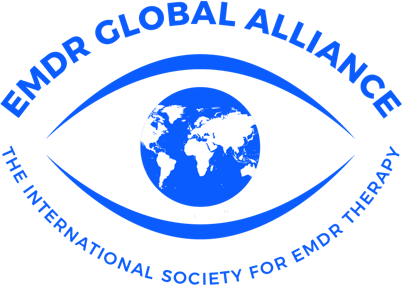Eye Movement Desensitization and Reprocessing (EMDR) therapy is an integrative psychotherapeutic approach that emphasizes the role of the brain’s information processing system. Mental health problems, excluding those caused by lack of information, organic deficit, toxicity, or physical injury, are conceptualized as the result of inadequately processed memories of disturbing or traumatic experiences. These unprocessed memories contain the emotions, physical sensations, and perspectives experienced at the time of the original disturbing event. EMDR comprises eight phases and a three-pronged methodology to identify and process
- Memories of past adverse life experiences that underlie present problems,
- Current situations that elicit disturbance, and
- Needed skills that will provide positive memory templates to guide the client’s future behavior.
Using standardized procedures, which include sets of eye movements or other forms of bilateral dual attention stimuli (tactile or auditory), the client’s memories are accessed and processed to an adaptive resolution. Stimulating the information processing system causes internal connections to form as the problematic experience is appropriately integrated and resolved. During the processing, insights automatically arise, along with positive emotions, beliefs and physical reactions, and the disturbing event becomes both a learning experience and the foundation of resilience.
Find an EMDR Therapy Therapist / Trainer / Consultant
Our Full Membership of Regional Associations includes the following members:
- EMDR Alliance of Latin America and the Caribbean EMDR Africa
- EMDR Africa
- EMDR Asia
- EMDR Europe
- EMDR Middle East and North Africa/Arab Countries
Associate Membership : of the Society is open to EMDR associations or organizations who subscribe to the objectives of the EMDR Global Alliance, and are in process of meeting criteria for Full Membership as set out in Article 3.1.1 of the Articles of Association. Associate representatives will be invited to observe and offer discussion during meetings of the Full Membership, including discussions in effort to reach consensus.
Our EGA Associate Member is the following:
- EMDR Australia.
Affiliated Stakeholders : Include those organizations in the EMDR community who have a vested interest in promoting and upholding aspects of the mission of the Society but do not represent national or regional associations. For example, organizations and associations such as the EMDR Humanitarian Associations, and Educational, or Research organizations. While operating independently of the Society, Affiliated Stakeholders may be invited periodically to: give advice or comments to the EGA Board; and inform the Board of any matters of relevance to the Society, its aims, or the objectives of the Affiliated Stakeholders.
Our EGA Affiliated Stakeholders -will be announced.
Committees with Specific Aims and Tasks are appointed by the Board who may appoint standing committees and define special roles or time-limited project groups to facilitate the effective functioning and performance of the Society.
Our EGA Committees at the time are the following:
- Standards Committee
- Website Committee.
Structure
Structure
The structure of our society is based on Swiss associations and consists of a non-hierarchical structure where there is a Board and Board members rotate through the positions of Chair, Vice-Chair and Treasurer.
The Board is the governing body of the Society and consists of two representatives for each regional/continental EMDR Association who work collaboratively. The Members of the Board decide among themselves the different functions to be attributed to the Executive Committee: Chair, Vice Chair, and Treasurer. The Board Secretariat may be appointed to assist in the work of the Board. Each member of the Board serves as Chair for one calendar year in turn. All Full Members shall rotate through the positions of Chair and Vice Chair. Each member of the Board is Vice Chair for one calendar year in turn. The Vice Chair is due to be Chair the following term, unless another possibility is necessary. The Chair and the Vice Chair may not be from the same region. The Board is responsible for: the day-to-day running of the Society; fulfilling the objectives of the EGA; and ensuring the work of the EGA is in accordance with the established Articles of Association policies and procedures.

